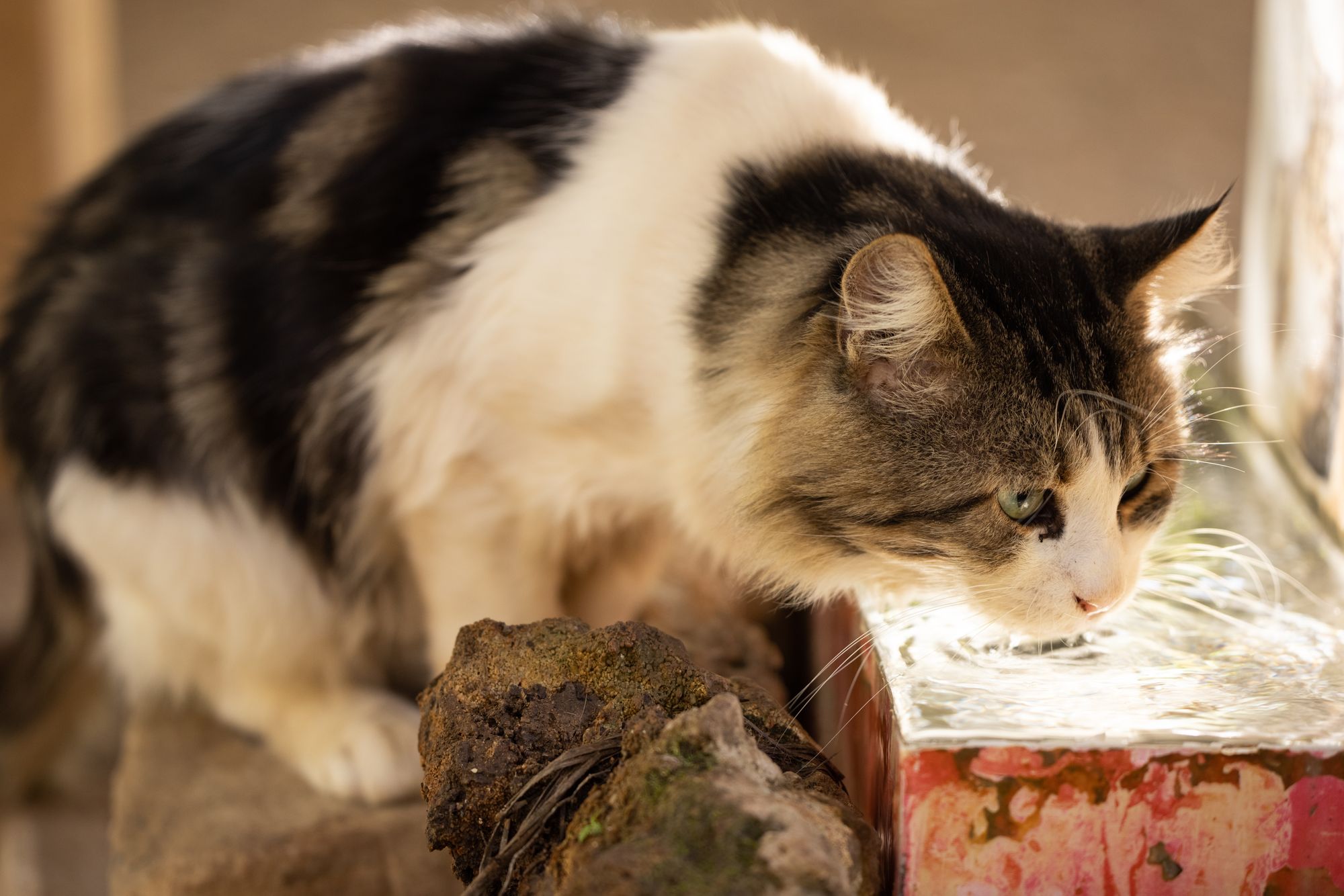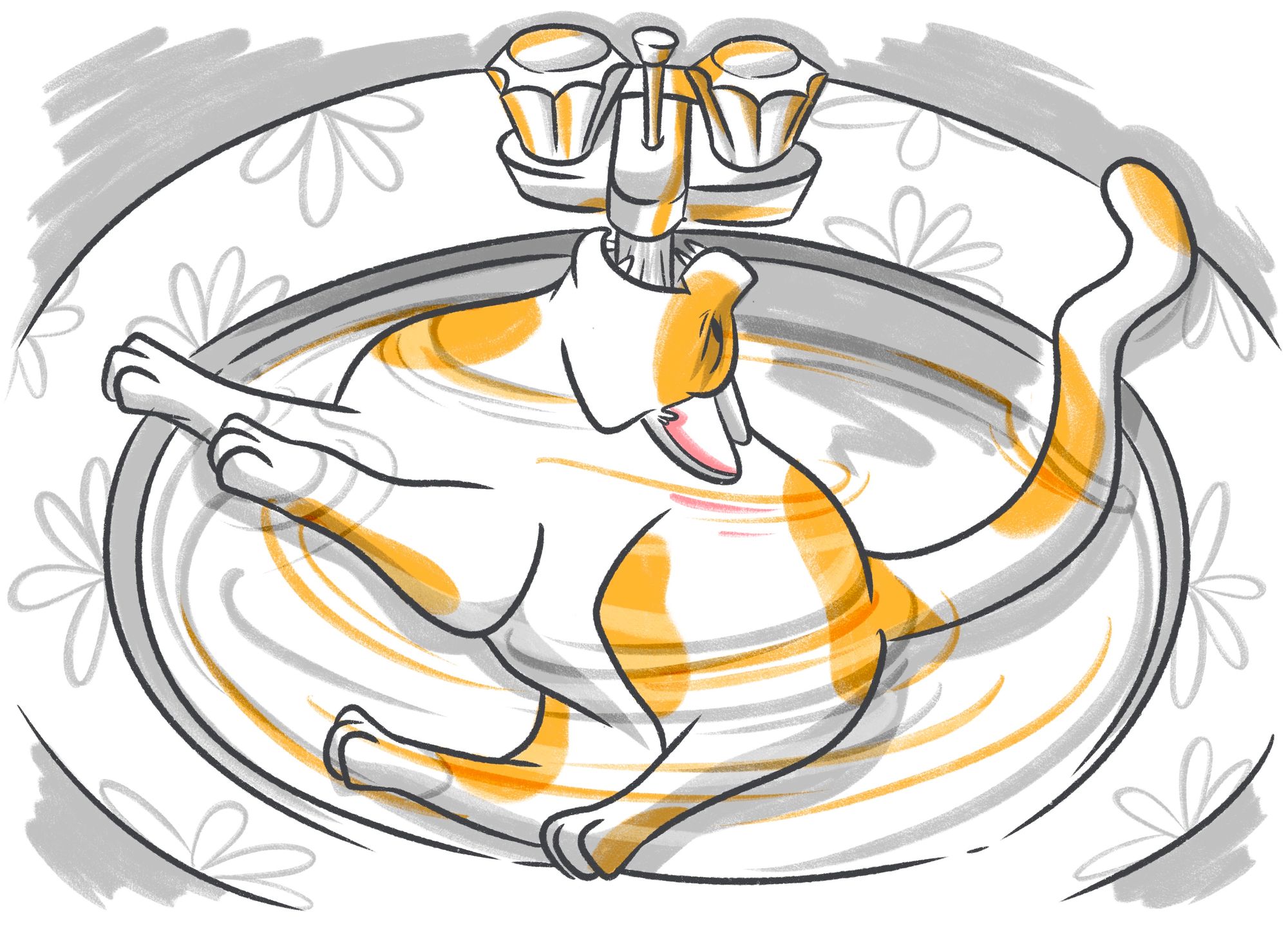Have you noticed that your cat has been drinking a lot of water lately?
Unfortunately, it could be a sign of a health issue. Research on feline hydration agrees that cats are "poor drinkers," as they have a much lower urge to drink water than dogs. This is because predators like cats get a lot of their water intake from the food they hunt.
So when your cat starts drinking much more water than usual, it's vital to investigate possible causes.
Content:
- Why Is My Cat Drinking A Lot Of Water
- How Much Water Should A Cat Drink
- How Much Water Is Too Much For Cats
- How Do I Know If My Cat Is Drinking Too Much Water
- Conclusion
Why Is My Cat Drinking A Lot Of Water
Cats may drink a lot of water because of a variety of medical conditions. These include kidney disease, diabetes, thyroid problems, urinary tract infections, liver issues, or hypercalcemia. Sometimes cats drink more water after episodes of vomiting and diarrhea or if they have too much salt in their diet.
So, when you notice your cat suddenly drinking a lot of water and meowing for more, it's time to investigate. A good option is to use the Petcube Emergency Fund to contact a veterinarian online (they're available 24/7). These veterinarians can help you figure out if your cat needs emergency care, and the fund provides up to $3,000 in coverage if they do.
Here are some main reasons a cat or kitten may drink a lot of water:
Kidney Disease
One of the common reasons cats drink a lot of water is chronic kidney disease. When their kidneys aren't working properly, they can't process urine and waste effectively. So, cats with kidney disease drink more water to get rid of waste from their bodies.
Diabetes Mellitus
Just like humans, cats can get diabetes too. When a cat's body doesn't have enough insulin or can't use it properly, sugar levels in the blood go up. This makes them thirsty as their body tries to flush out the extra sugar through peeing.
Hyperthyroidism
Hyperthyroidism happens when a cat's thyroid gland becomes overactive. This can speed up their metabolism, causing them to lose more fluids through peeing. To compensate for that, cats with hyperthyroidism drink more water.
Urinary Tract Infections
Cats with urinary tract infections (UTIs) may drink more water because UTIs tend to make them pee a lot more often (peeing may also seem painful, with signs of strain and even meowing).
The constant loss of moisture can lead to them drinking more water. If your cat is drinking a lot and showing signs like frequent peeing or struggling to pee, it's a good idea to see a vet.
Liver Disease
Some liver problems can mess with a cat's fluid balance and metabolism. This can lead to increased thirst. Liver disease often comes with other symptoms like loss of appetite, weight loss, and yellowing of the skin and eyes.
Hypercalcemia
If a cat has too much calcium in their blood, called hypercalcemia, it can be due to conditions like overactive parathyroid glands or certain cancers. Cats with hypercalcemia may drink more water, pee more often (polyuria), and refuse to eat. They may also seem weak and listless.
High-Salt Diet
If a cat consumes a diet high in salt, such as when they eat human food or certain commercial treats, it can make them thirsty and make them drink more water. When cats do not drink enough water, vets may add salt to their diet to encourage them to drink more.
Vomiting or Diarrhea
When cats experience vomiting or diarrhea, they can lose a significant amount of fluid. In response, they may drink more water to compensate for the water loss and prevent dehydration.
Stop Googling - Ask a Real Vet
A Hot Environment
Cats may drink more water in hot weather or environments to stay hydrated and regulate their body temperature. It's their natural way of coping with the heat and maintaining proper hydration. An extremely active cat may also drink more water.
How Much Water Should A Cat Drink
How much water a cat should drink depends on their activity level, health, diet, and environment. An indoor cat in an air-conditioned home won't need as much water as an active outdoor cat on a hot summer day. Likewise, cats that eat wet food need less water than cats that eat dry food.
Still, studies show there are two basic ways to estimate how much water your cat needs in milliliters.
-
Cats need to drink about 50–60 ml per kg of body weight daily. This means a cat weighing 5 kg (11 lbs) should drink at least 250 ml of water per day, roughly one cup.
-
The National Research Council (NRC) suggests working out how much water your cat needs based on how many calories they eat daily. Each kcal of food they eat should have one ml of water. So an 8-pound cat that eats 200 calories per day would need to drink roughly 200 ml of water (6.8 ounces).
Remember, wet food can be up to 75% moisture, so cats can get much of their daily water requirements just from their canned food. Cats eating dry food (kibble) need to drink far more water.
How Much Water Is Too Much For Cats

Cats can drink too much water, and the ASPCA warns of water toxicity or poisoning in extreme cases. Most cats do not need to drink more than 60 ml of water per kg of body weight. However, vets usually classify excessive thirst as polydipsia in cats when they start drinking 100 ml per kilogram of body weight, or about 4 ounces per every 5 lbs.
Too much water is dangerous. Even when sick cats get life-saving fluids through an IV, overhydration is always a risk.
However, remember that some health conditions may mean that your cat needs more water than usual. For instance, cats vomiting or having severe diarrhea are rapidly losing moisture and essential electrolytes and may die from dehydration. But in these cases, it's best to work with your veterinarian to establish how much water they need to rehydrate safely.
How Do I Know If My Cat Is Drinking Too Much Water
Most of us don't measure our cat's daily water intake in milliliters and ounces, so it's not always obvious when they are drinking more than usual. Common symptoms to look out for include:
- Constantly heading to the water bowl or fountain (if you're unsure, set up a Petcube Camera near their water bowl to monitor their water intake);
- Increased urination or litter boxes clumping up more than usual;
- Finishing the water in their bowl faster than usual;
- Showing signs of dehydration. These symptoms include dry gums, sunken eyes, lethargy, and a loss of skin elasticity;
- Changes in appetite or weight;
- Behavioral changes such as restlessness or lethargy, increased vocalization, or seeking out water sources other than their regular bowl.
Conclusion
If your cat seems to be drinking excessive water, it could be a sign of an underlying health problem. Remember, being thirsty alone doesn't mean your cat has a specific condition. But it's essential to consult a vet to check your cat's overall health and run tests if needed.
Was this article helpful?
Help us make our articles even better









